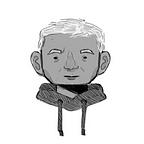Road to Bhuj
I landed in Ahmedabad to support the disaster relief work from our organisation. On the tenth day after the event, I proceeded to Bhuj, the epi-centre of the earthquake. The day was hot ad sultry, though it was February. It was my first travel to an earthquake site. The distance of 330km took me ten hours on the road. The earthquake occurred on the 26th of January with a magnitude of 7.7 on the Richter scale. The Indian Republic day was an important national event, and schools organised customary marchpast and flag-hoisting ceremonies in several villages.
Complete devastation was there along the road to see, and not a single building existed. I could see many men, women and children scattered in groups along the route — some inside tents and several outsides, waving as we glided. Children were crying. Hunger and agony were visible on their faces, and we were driving through a sea of sorrow. The people rushed towards our vehicle, believing it was a relief vehicle, and we had food packets for distribution.
We stopped for roadside tea at three places. The tea places were make-shift small tables with stoves and a few utensils. We learned at the tea shops that many perished under the debris as the tremors lasted longer than five minutes. Estimation of deaths was impossible. As the event occurred in the morning, many villagers were outside. While some men ran to safety, women and children in the homes died. The people did not realise it was an earthquake, and their minds were blank with the shock. The survivors ran helter-skelter, looking for their kith and kin. They could not access their own houses because of debris. The houses caved in like matchboxes, and there was a lot of noise followed by rubble covering the roads, making them inaccessible. No equipment was available to rescue any survivors on the first day.
Being a public holiday, no government official was on duty. Primary health centres also collapsed, and there was no medical help for the survivors. There was an instant power outage and total disruption of the communication system, and the water lines cracked and flooded the streets. While we had stopped for tea, we saw a relief vehicle that carried food. As the car stopped, there was a lot of commotion, and people rushed toward the car, stretching their arms to collect their share. Unable to manage the rush, someone in the vehicle threw the food packets into the air, and some lucky ones were able to catch them.
Fire trucks and ambulances were available only in larger towns. In addition, there was an acute shortage of food and water. Cooking was out of the question as there were no utensils or provision stores. Sanitation took a severe beating, and people used open spaces for relieving themselves. The local government officials were helpless as they were running around for the safety of their families. Though the government stepped into action on the second day, it took time to identify and estimate the size of the calamity. A few schools and temples survived the catastrophe. On the third day, the non-government organisations stepped in to support the affected families and used the places as relief shelters. The story of cattle was agonising — the cattle walking on the roads survived while the others tied to the pegs perished under the debris.
The driver had to take detours as the roads were damaged. It became dark we approached Bhuj. Unusual quietness spread like a carpet as there were no lights and nothing to see. I was driving through a graveyard that stretched for several miles. I can never forget the long day, and the images are fresh in my memory.
I was tiny and helpless in the presence of nature’s fury.
